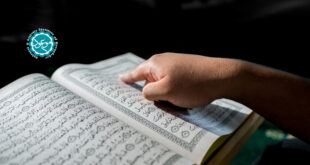On top of all this, there is what the Shaykh as-Saduq pointed out in the opening of the Kitabu’t-Tawhid, when he said:
What led me to write my book was that I found people among those who opposed us attributing the doctrines of anthropomorphism and determinism to our group, since they found information in their books of whose explanation they were ignorant or whose meaning they did not under- stand, and which they took out of context and failed to compare word by word with the Qur’an [to see if it concurred with the holy Qur’an in word and meaning, for if the holy Qur’an substantiated anthropomorphism and determinism, then it was proof, and if they did not speak of a proof for this in the Qur’an why did they speak of its proof in hadith].
In this way they denounced our school before the ignorant, obscured our path for them, diverted people from the religion of Allah, and prompted them to reject the proofs of Allah. I have sought favour with Allah in writing this book on Unicity and on the refutation of anthropomorphism and determinism . . .25
The essence of the discussion is that the Imamiyyah studied their beliefs in light of the hadith passed down from the Imams, peace be upon them, and that this study clearly revealed that what they believed derived from these hadith, and that the contents of the hadith were consistent whether they had been narrated on the authority of the first Imam, the Commander of the Faithful, peace be upon him, or from the eleventh Imam, or the Awaited Proof, peace be upon them, for example.
The reason for this is that after having professed belief in the Imamate and sworn obediance to the Imams, peace be upon them, as I previously noted regarding the meaning of the Imamate among the Imamiyyah, they took their beliefs from them, just as they took their laws. A study of the two books I‘tiqadatu ‘l-Imamiyyah by as-Saduq and Tashihu ‘l-i‘tiqad by al-Mufid suffices to uphold this view, especially since as-Saduq’s book is no more than a compilation of the contents of hadith and Qur’anic verses employing the same words and phrases as we have mentioned previously.
I shall not dwell on the idea that the Imamiyyah drew on the Mu‘tazilah and were influenced by them in the beliefs they concurred upon except to say that it is a baseless falsehood without a speck of truth in it, and without any support from the study of the beliefs of the Imamiyyah and the foundations upon which these beliefs are based. The question, which deserves attention, is whether anyone apart from the Imamiyyah took their beliefs from the Imams.
I shall not attempt to look into this aspect here; it is enough to point out that al-Ka‘bi al-Balkhi, the Qadi ‘Abdu ‘l-Jabbar, Ibnu ‘l-Murtada and Nashwan al-Himyari trace the origin of the Mu‘tazilah School, with respect to Justice and Unicity, to the Commander of the Faithful, peace be upon him.26
adh-Dhahabi said: “Zurqan [the famous Mu‘tazili mutakal- lim] said: ‘Abu ‘l-Hudhayl al-‘Allaf narrated to us: “I have taken what I believe concerning Justice and Oneness from ‘Uthman at-Tawil, and he informed me that he took it from Wasil ibn‘Ata’, who took it from ‘Abdullah ibn Muhammad ibn al- Hanafiyyah, who took it from his father, who took it from his father‘Ali, who took it from the Messenger of Allah, may Allah bless him [and his family] and grant [them] peace, who narrated that Gabriel came down with it from Allah, the Sublime.” ‘Several people have narrated this from Zurqan.”27
It must be pointed out that if something is found in I‘tiqadatu’l-Imamiyyah which al-Mufid did not comment on or which he affirmed, which he objected to or did not accept, or with the proof of which, as given by as-Saduq, he was not satisfied, it is not consequently established that other Imami scholars agreed with either or both of them, deemed their proofs correct, agreed with the demonstrations of their opinions, or accepted al- Mufid’s objections. Naturally, this aspect of the two books is restricted to the details of what is mentioned in them, not to the fundamental beliefs, which all the Imamiyyah are agreed upon.
The nature of Imami traditions rejects corporealism and anthropomorphism
One example, which I shall cite, of the hundreds of examples, which demonstrate the nature of Imami hadith and their insistence that no inclination towards corporealism and anthropomorphism or determinism should find a place in the soul of anyone who believes in them, is what was narrated on the authority of the Commander of the Faithful, peace be upon him, in the words of one of his famous speeches.
This is the speech mentioned by ash-Sharif ar-Radi, Abu ‘l- Hasan Muhammad ibn al-Husayn al-Musawi (359/970–406/1015) in Nahju ‘l-Balaghah, and which was narrated by the Imami Traditionists who came before him. The Shaykh as- Saduq (c 306/919–381/991) transmitted, and partially com- mented upon, a large section from the beginning of this sermon in his Kitabu’t-Tawhid,28 though this differs somewhat in wording from the versions in Nahju ‘l-Balaghah, and al-Bihar.29
Abu ‘n-Nadr Muhammad ibn Mas‘ud as-Sulami al-‘Ayyashi (d. c 320/932) also narrated it, and extracted a portion of it in his Tafsir,30 and this is narrated in al-Bihar,31 and in the Tafsiru’l-burhan.32 All of them traced the chain of authority from themselves back to Mas‘adah ibn Sadaqah, who narrated it on the authority of the Imam as-Sadiq and on the authority of his father, peace be upon them both.
This person is Abu Muhammad, Mas‘adah ibn Sadaqah al-‘Abdi, a follower of as-Sadiq and al-Kazim, peace be upon them both, who wrote Kitab Khutab Amir al-Mu’minin ‘alayhi ‘s-salam.33 Zaydi Traditionists such as Yahya ibn al-Husayn al-Hasani, an-Natiq bi ‘l-Haqq, the Zaydi imam (340/952–424/1033), narrated it with another chain of authority ending with Zayd ibn Aslam,34 who narrated it directly from the Commander of the Faithful, peace be upon him. His wording is close to that of as-Saduq, although the chain of authority differs. The author of Taysiru ‘l-matalib fi amali ‘l-Imam Abi Talib35 cites a large portion of it, as does Ahmad ibn Muhammad ibn ‘Abd Rabbih al-Qurtubi al-Maliki (246/860–328/940) in his al-‘Iqdu ‘l-farid.36
The Commander of the Faithful, peace be upon him, delivered this sermon from the pulpit in Kufah. A man said to him, while he was speaking: “Describe our Lord as we will see Him with our eyes . . .” and he became angry with him and summoned the community to prayer; and the people collected about him until the mosque was packed with his followers, and he said, among other things (according to the narration of ash- Sharif ar-Radi):
I bear witness that whoever makes a likeness for You out of the disparate limbs of Your creation and the connection of the sockets of their joints which you have clothed in Your wisdom has not fixed the innermost part of his mind on knowledge of You, nor has certainty informed his heart that there is no equal to You.
It is as if he had not heard the followers absolving themselves from those they [falsely] follow, saying:
By Allah, we were in manifest error when we made you equal with the Lord of the worlds (ash- Shu‘ara’, 26:97-98).
The transgressors falsify You when they liken You to their idols, attribute to You with their imaginations the adornment of created things, divide You up in their minds according to the partition of bodies, and judge You by analogy with natural constitutions and their various powers through the talents of their intellects. I bear witness that whoever equates You with a thing of Your creation has put You on the same level with it, and that whoever does so is a disbeliever, according to that which has been revealed through the unambiguous among Your verses and that which the evidence of Your clear proof pronounces.
For truly You are Allah Who cannot be confined to the mind so as to be brought into conformity with the vicissitudes of its thinking, nor to the deliberation of its mental operations to be limited and subject to whims.37
I do not wish to comment on this section of the sermon, in which the Imam pointed out the reasons for the occurrence of anthropomorphism and corporealism among the Imamiyyah in its early days, ‘when they liken You to their idols . . .’ However, I will say that someone who believes that these words, and others from the hadith of the Ahlu ‘l-Bayt, are from an infallible Imam who commands an obedience not unlike that of the Messenger of Allah, peace be upon him and his progeny, (and I have already demonstrated the belief of the Imamiyyah in the Imamate and the Imam) would hardly be naturally inclined (except in abnormal circumstances) to speak about anthropomorphism or corporealism except in an unknowing way. The Qadi ‘Abdu ‘l-Jabbar al-Mu‘tazili ash-Shafi‘i said:
As for the Commander of the Faithful, peace be upon him, his sermons declaring the refutation of anthropomorphism and upholding Justice are more than can be counted . . .38
He also stated:
If you look at the sermons of the Commander of the Faithful, you will find them replete with refutations of the visibility of Allah.39
Anti-Imami scholars reverse the reality
Whatever the case may be, the accusation was raised against the Imamiyyah by their adversaries that the Imamiyyah, in their formative days and during the times that immediately followed, limited themselves and their beliefs within the literally pre- scribed boundaries of the Holy Qur’an and the Sunnah, and did not cross over into intellectual fields by relying on reason as a basis for explaining the faith and its directives, or resorting to it in demonstrating the truth, rejecting the objections of its enemies, and showing the falsity of their proofs.
However, the adversaries of the Imamiyyah did not stop at that; rather, they went on to accuse the Imamiyyah of being, before their joining the Mu’tazilah:
1. Clear proponents of anthropomorphism and corporealism;
2. Not upholders of Justice as a religious principle having special attributes and requirements;
3. Unaware of the precise differences and theoretical discussions pertaining to Unicity and Justice which I pointed out in a general way during the discussion about the beliefs of the Imamiyyah – and unaware of the difference between Attributes of Essence and Attributes of Action, for example, since they had not yet resorted to intellectual investigations which lead to the clarification of these critical fundamentals and the establishment of these particulars;
4. And upholders, even fierce upholders, of predestination.
Abu ‘l-Husayn al-Khayyat al-Mu‘tazili stated:
As for the totality of the teaching of the Rafidah, it is: that Allah has a physique, an image, and a limit; He is in motion and at rest, draws near and moves away, is lightened and weighed down . . . This is Rafidi Unicity in its entirety, save for a small group of them who associated with the Mu‘tazilah and believed in Unicity, . . . and these the Rafidah expelled and washed their hands of. As for their shaykhs, like Hisham ibn Salim, Shaytanu ‘t-Taq, ‘Ali ibn Maytham, Hisham ibn al-Hakam, ‘Ali ibn Mansur, and as- Sakkak, their belief is what I have related concerning them.40
McDermott says, on the authority of Ibn Taymiyyah, that the doctrine of Divine Justice was taken up by the later writers of the Imamiyyah, like al-Mufid (336/948–413/1022), al-Musawi (ash-Sharif al-Murtada [355/966–436/1044]), and al-Karajiki (c 369/980–449/1057), and had little influence on their predecessors in the Imamiyyah. On this basis, McDermott main- tains that al-Khayyat points to the presence of a minority con- nected with the Mu‘tazilah and influenced by their beliefs, just as al-Ash‘ari mentions in his writings. McDermott gives the Nawbakhtiyyin, who existed around the end of the third century (the beginning of the tenth century AD) as an example.41
al-Mufid was heir to a double legacy: that of the early Imamite theologians – notably the Nawbakhtis, who were in contact with Mu‘tazilite thought from the latter part of the third century of the Hijrah, and the traditionist school of Qum represented by Ibn Babuyah al-Qummi [as- Saduq].42
But a disciple of Ibn Taymiyyah, Shamsu ‘d-Din adh- Dhahabi (673/1274–748/1348) anticipated what his colleague narrated, and said:
Since the end of the year 370 [980] up to our own time the Rafidah and the Mu‘tazilah have befriended each other like brothers.43
However Ibn Hajar al-‘Asqalani does not accept this definition of history, and states:
It is not as he says, but rather they ceased being brothers from the time of al-Ma’mun (the ‘Abbasid caliph [170/786 – caliph 198/813 – d. 218/833]),44
I shall pass over all these remarks, and concern myself only with the examination of what they are founded upon. It all goes back to what these adversaries related on the authority of some of the Imami scholars, and the predecessors of their Tradition- ists and theologians, like those al-Khayyat names, concerning the doctrine of blatant corporealism and anthropomorphism, and how they wound up on the brink of idiocy and obscenity.
In doing so I am motivated by the endeavor to uncover the truth, and more importantly, by my belief in Islam and what it enjoins upon faithful Muslims who heed words when they are spoken, who listen to all sides of the story and then pick the best, who judge fairly and without personal bias, who speak the truth even when it goes against them, and adhere to the word of Allah:
O you who believe! Be steadfast witnesses to Allah in equity, and do not allow hatred for any people to seduce you, and cause you to act unjustly. Act justly, for that is closer to your duty. Be dutiful to Allah, for Allah is informed of what you do (al-Mdaidah, 5:8).
Faithful to all this, I shall examine some of these charges in a general way via a study restricted to the two Hishams, Hisham ibn al-Hakam and Hisham ibn Salim. I shall not venture beyond them, and on the results of this inquiry about them judge others who are like them.
* * * * *
Tags Imamiyyah
Check Also
15 European Countries With Most Muslims
According to Mouood, quoting by World Atlas: 15 European Countries With Most Muslims By 2050, Muslims …
 Mouood Mouood English Edition
Mouood Mouood English Edition



